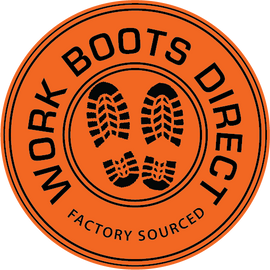Why Work Boot Safety Ratings Matter
Not all boots are created equal. When it comes to safety, those letters and numbers printed on your work boots actually mean something. Understanding ratings like AS/NZS 2210.3, ASTM F2413, or SRA isn’t just about compliance—it’s about protecting yourself on the job.
Breaking Down the Major Work Boot Ratings
Here’s what you need to know about the key safety standards and what they cover:
AS/NZS 2210.3 (Australia & New Zealand)
This is the primary safety standard for work boots in Australia and New Zealand. It covers:
- Toe protection: Steel or composite caps tested for 200J impact and 15kN compression
- Slip resistance: Minimum grip levels on wet/oily surfaces
- Sole puncture resistance (for applicable models)
- Heat resistance up to 300°C for high-heat styles
- Electrical hazard or anti-static protection
ASTM F2413 (North America)
The US standard, often used on globally sold boots. It includes:
- Toe cap safety – same 200J standard as AS/NZS
- Metatarsal protection
- Puncture-resistant plates
- Electrical hazard (EH) or static dissipative (SD) protection
Boots that meet both ASTM and AS/NZS are often approved for international job sites.
SRA / SRB / SRC (Slip Ratings)
These refer specifically to slip resistance levels, often tested under European standards:
- SRA: Slip tested on ceramic tile with water & detergent
- SRB: Tested on steel with glycerol
- SRC: Passes both SRA and SRB tests
Where to Find Ratings on Your Boots
Most certified work boots will have a compliance label stitched inside the tongue or printed on the box. It will look something like this:
“AS/NZS 2210.3:2019 – Type 1, SRA Slip Resistant, Steel Toe”
If your boots don’t have these clearly stated, they likely aren’t certified—and that could be a problem on site.
What Happens If You Wear Non-Compliant Boots?
- You may be denied site access or fail PPE checks
- You're at greater risk of foot injuries or burns
- You could void workers’ compensation claims in some industries
Basically, it’s not worth the risk. Site managers are getting stricter, and compliance is no longer optional—it’s a must.
Shop Fully Certified Boots at Work Boots Direct
We only stock AS/NZS 2210.3 compliant work boots that pass every major safety test. Whether you need EH protection, oil slip resistance, or metatarsal shielding—we’ve got it covered.
FAQs About Safety Boot Ratings
Can I wear ASTM boots in Australia?
Yes, but make sure they also meet AS/NZS standards. Some boots are dual-certified for global use.
What’s the best rating for slippery floors?
Look for SRC or SRA-rated soles. These offer maximum slip resistance on wet, soapy, or oily surfaces.
Are composite toes weaker than steel?
No. Both meet the same impact and compression standards—they’re just made from different materials.
Final Thoughts
Don’t let safety codes confuse you. Understanding boot ratings helps you make smarter buying decisions—and keeps you compliant where it counts. Shop confidently at Work Boots Direct, where every pair meets the mark.

